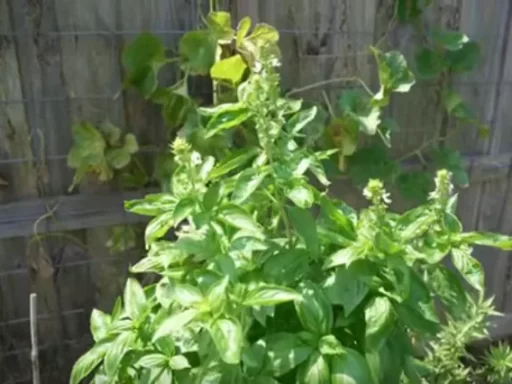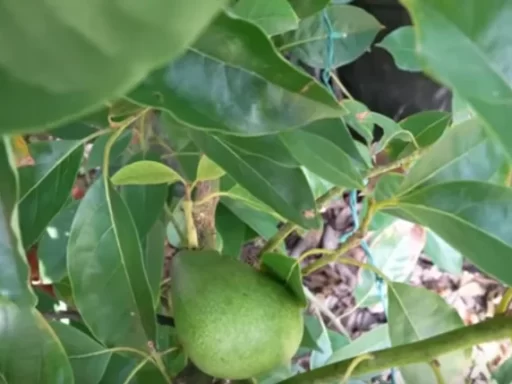As the seasons change, particularly during the stunning fall evenings along the Southeastern coast of North Carolina, many people with small yards feel disheartened about their gardening options. The common misconception is that limited space equals limited opportunities for gardening, especially when it comes to planting fruit trees. However, even the tiniest of yards can accommodate fruitful endeavors. In this article, we’ll explore four incredible fruit trees that thrive in small spaces, ensuring you can enjoy fresh produce right from your backyard.
1. Dwarf Bonanza Peach Tree
First on our list is the Dwarf Bonanza Peach tree. This variety is a game-changer for those with limited space. Typically, peach trees require ample room due to their sprawling nature and need for regular pruning. However, the Dwarf Bonanza Peach tree reaches a mere height of 6 feet at maturity, making it suitable for the smallest of gardens.
What sets the Dwarf Bonanza apart from other dwarf varieties is its impressive fruit quality. While many patio peaches produce small, flavorless fruit, the Dwarf Bonanza yields full-sized, commercially viable peaches with excellent flavor. Furthermore, this tree is naturally self-fertile, meaning you only need one tree for a bountiful harvest. With just about 250 chill hours required, you can plant this peach tree as far south as Central Florida, making it a versatile option for various climates.
Having experienced the benefits of this tree firsthand, I’ve found that it fits perfectly along the western border of my yard. It showcases that even in small areas, with the right selections, you can cultivate a fruitful garden.
2. The Itchy Kik Jiro Asian Pear Tree
Next up is the Itchy Kik Jiro Asian Pear tree, a non-astringent variety that produces delectable fruit. What makes this tree particularly appealing is its versatility; you can enjoy the fruit when it’s hard and unripe or wait until it softens and sweetens as it fully ripens. Remarkably precocious, this variety fruited for me the very next year after planting.
The Itchy Kik Jiro is not only one of the most cold-hardy Asian pear trees, but it also remains compact. Reaching only 8 to 10 feet in height if left unpruned, this tree is ideal for smaller yards. My own experience with this tree has been delightful, as it provides sizable fruit that can rival the size of a beefsteak tomato. I protect my ripening pears with organza bags to deter pests and rodents, ensuring a fruitful harvest.
Another benefit of growing this tree is that its fruit ripens in October or November, extending the harvest season well into late fall. This is particularly advantageous for gardeners in cooler regions, allowing for fresh fruit long after the summer growing season has ended. Additionally, a light frost can enhance the sweetness of the fruit, making this a resilient option for small-space gardening.
3. Owari Satsuma Mandarin Orange Tree
For those who dream of citrus in their garden but worry about space and climate, the Owari Satsuma Mandarin orange tree is an excellent choice. While citrus trees can grow large when grafted onto full-sized rootstock, selecting a tree grafted onto trifoliate rootstock keeps it small—about 5 to 7 feet tall. This is ideal for compact gardens or even around the foundation of a house.

Another concern for many is the cold hardiness of citrus trees. The Owari Satsuma is notably cold-tolerant, surviving temperatures down to 12°F. Having lived in North Carolina for five years, I can attest to the resilience of this tree. Despite experiencing numerous freezes during winter, my Owari Satsuma has shown no signs of cold damage.
To further protect this tree during particularly cold nights, I employ simple methods such as covering it with incandescent Christmas lights and frost jackets, which help maintain warmth. The abundant fruit production of this tree is astonishing; last season, I harvested over 200 delicious oranges. Growing citrus is a rewarding experience that adds a tropical flair to any small yard.
4. Arbana Olive Tree
Lastly, the Arbana Olive tree stands out as an excellent option for small backyards. Traditionally, growing olive trees has been a challenge due to their need for cross-pollination and the common belief that they grow too large. However, the Arbana variety is self-fertile and grows only 10 to 15 feet tall if left unmanaged. With regular pruning, you can keep it even smaller.
One of the most significant advantages of the Arbana Olive is its cold hardiness; it can thrive in conditions as low as Zone 7B. This Spanish cultivar is highly prized for its delicious oil, but you can also use it as a table olive if brined and cured properly. Unlike many fruit trees that are often relegated to the backyard, olive trees can serve as beautiful, ornamental additions to your front yard. Their evergreen nature allows them to blend seamlessly into landscape designs, making them an attractive choice for homeowners.
Conclusion
These four fruit trees—the Dwarf Bonanza Peach, Itchy Kik Jiro Asian Pear, Owari Satsuma Mandarin, and Arbana Olive—are perfect for small spaces without sacrificing fruit quality or production. Each of these trees brings its own unique benefits and flavors, making it easier for anyone to embark on their gardening journey, regardless of yard size. Whether you’re a seasoned gardener or just starting, these trees can transform your small yard into a fruitful paradise.
Frequently Asked Questions
- Can these fruit trees grow in containers? Yes, all of these fruit trees can thrive in containers, making them perfect for patios or small yards.
- What type of soil do these trees prefer? Well-drained soil with a good amount of organic matter is ideal for these fruit trees.
- How often should I water these trees? Regular watering is essential, especially during dry spells. Ensure the soil remains moist but not waterlogged.
- Do these trees need full sunlight? Yes, all these trees prefer full sunlight for optimal growth and fruit production.
- How long does it take for these trees to produce fruit? Most of these trees will start to bear fruit within 1-3 years of planting, depending on the variety and care.
- Are there any pests that I need to worry about? Like all fruit trees, they can be susceptible to pests. Regular monitoring and protective measures can help mitigate this risk.
- Can I grow these trees in colder climates? While some trees are more cold-hardy than others, with proper protection and care, you can grow most of these trees in colder climates.




